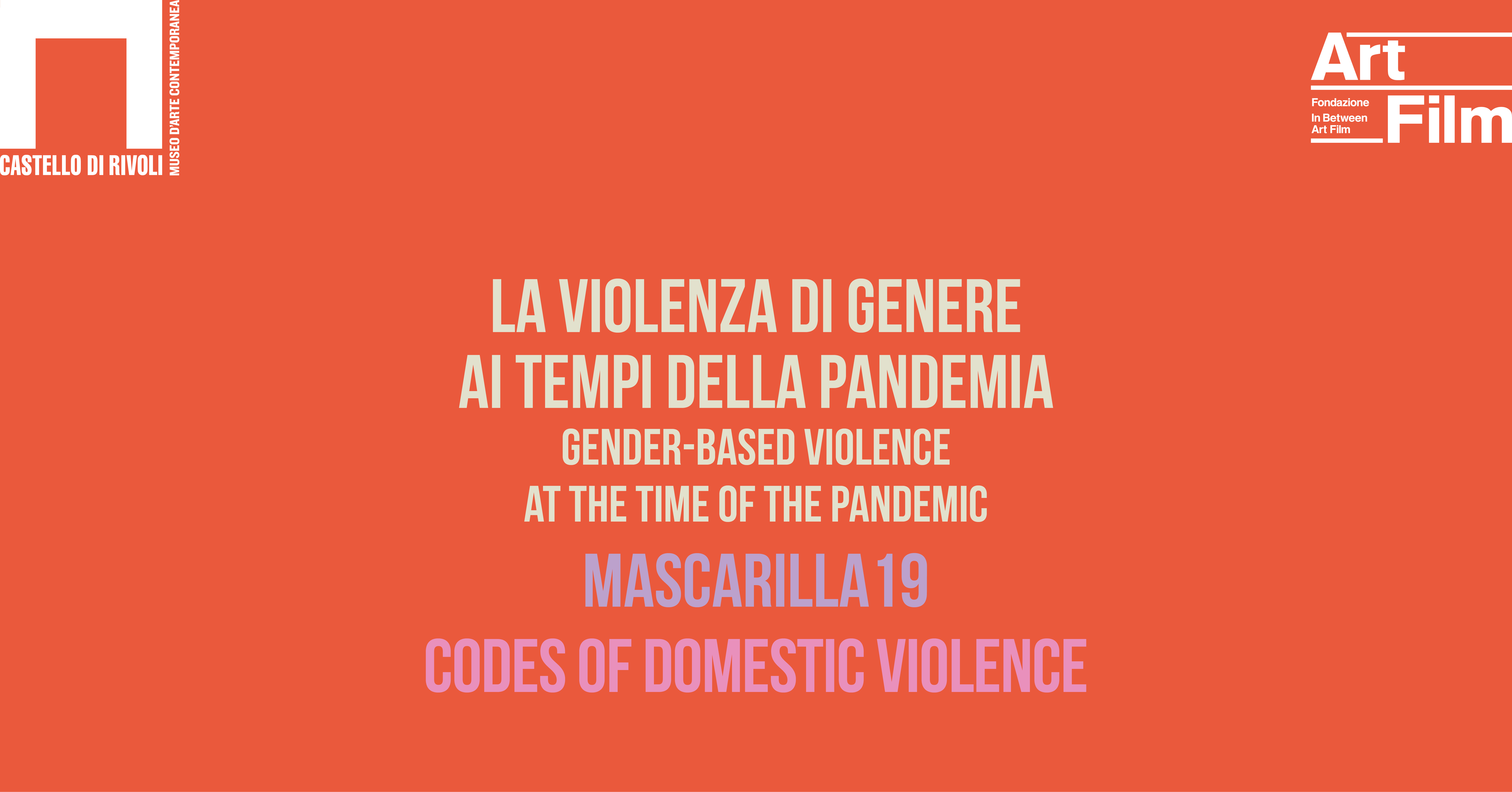Castello di Rivoli will host a screening program produced by Fondazione In Between Art Film on 8 March on the occasion of International Women’s Day
Monday March 8, 2021, 4 – 6 pm
Live digital streaming from the Castello di Rivoli Theater
The Castello di Rivoli Museo d’Arte Contemporanea presents Mascarilla 19 – Codes of Domestic Violence, a project curated by Leonardo Bigazzi, Alessandro Rabottini and Paola Ugolini, produced by Fondazione In Between Art Film.
On the occasion of International Women’s Day, the Museum proposes a meeting on the theme of gender-based violence with the Director of the Castello di Rivoli, Carolyn Christov-Bakargiev, the founder and President of Fondazione In Between Art Film and creator of Mascarilla 19 – Codes of Domestic Violence, Beatrice Bulgari, the Artistic Director of Fondazione In Between Art Film, Alessandro Rabottini, the curator Paola Ugolini and the artists Silvia Giambrone (Agrigento, 1981), Elena Mazzi (Reggio Emilia, 1984), MASBEDO (Nicolò Massazza, Milan, 1973; Iacopo Bedogni, Sarzana, 1970) and Adrian Paci (Shkodër, Albania, 1969).
Closed to the public in compliance with the provisions for the containment of the spread of Covid-19, the meeting will be recorded and streamed online on Monday March 8 from 4 to 6 pm in the Museum Theater with participants on site. These films offer different perspectives on the drama of domestic violence in the unprecedented scenario of global isolation exacerbated by the pandemic: Domestication (2020) by Silvia Giambrone, Muse(2020) by Elena Mazzi, Vedo rosso (2020) by Adrian Paci, and Daily Routine (2020) by MASBEDO.
After the greeting and the introduction, Alessandro Rabottini will present Fondazione In Between Art Film project and the conversation in which the curator Paola Ugolini and the attending artists Silvia Giambrone and Elena Mazzi will take part, while MASBEDO and Adrian Paci will join remotely.
The other films commissioned as part of Mascarilla 19 – Codes of domestic violence are:
Espacios Seguros (2020) by Iván Argote (Bogota, 1983); Flowers blooming in our throats(2020) by Eva Giolo (Bruxelles, 1991); Sunsets, everyday (2020) by Basir Mahmood(Lahore, 1985); and Lacerate (2020) by Janis Rafa (Athens, 1984) are simultaneously broadcasted on the digital platform.
Fondazione In Between Art Film was set up in Rome with the mission of spreading the culture of the moving image and supporting artists, institutions, and international centers of research that explore the dialog between disciplines and the grey areas in film, video, art, performance and installation. Guided by its founder and president Beatrice Bulgari, Fondazione In Between Art Film contributes to the international artistic debate by taking a closer look at the nature, role, and potential of moving images in our time.
Elena Mazzi
Muse, 2020
Video 4K, 13’ 30’’ [excerpt 5’]
Courtesy the artist, galleria Ex Elettrofonica and Fondazione In Between Art Film
The artistic vision of Elena Mazzi deals with the relationship of human beings to their environment. Taking a primarily anthropological approach, she explores and records the personal and collective identity of a given territory, highlighting different forms of interaction and transformation. In the video Muse, Elena Mazzi leads viewers into the nightmare of gender violence through the disorienting beauty of the Greek and Roman statues in the Antiquarium of Palazzo Grimani in Venice. The video begins by showing details of the interiors as if they were still inhabited, while a voiceover ushers us into the private world of the person who lived, or perhaps still lives, in those solitary rooms. The visual rhythm changes as the camera begins to show close-ups of the bodies and faces of these women and men from antiquity; bodies that have been restored, put back together, with breaks and mends in the marble; details of broken fingers; a series of legs and bodies; male and female statues seen in relation to each other from different angles, with rays of natural light cutting in between. These are statues that have been stolen from other places, in an era of brutal colonialism that clashes with the perfect aesthetic balance of their arrangement. They are bodies that speak to us of distant lands and times, of love, violence, of myth, pillage, death, and rebirth. The voiceover tells stories of rape, of abduction, of violent beings who transform themselves in order to capture their sexual prey: helpless, beautiful human beings, both male and female. The text has been constructed by selecting myths in which violence plays a pivotal role, putting them into a broader narrative that ties this mythological past to the present and highlights how certain behavioral dynamics are still the same today. This visually powerful narrative takes us into the violent world of myth, based on power and domination, where violence is directly employed by a wrathful, lustful god.
